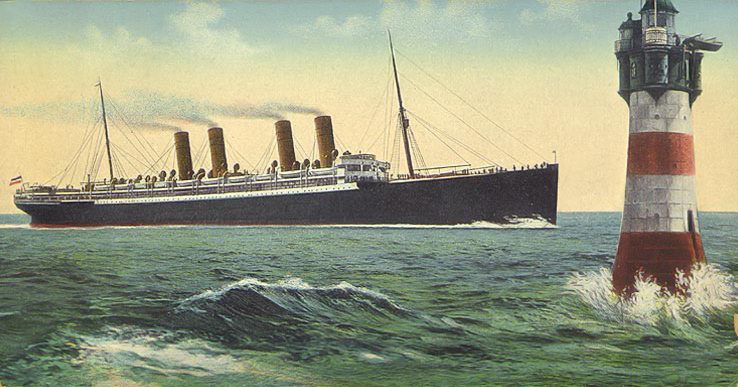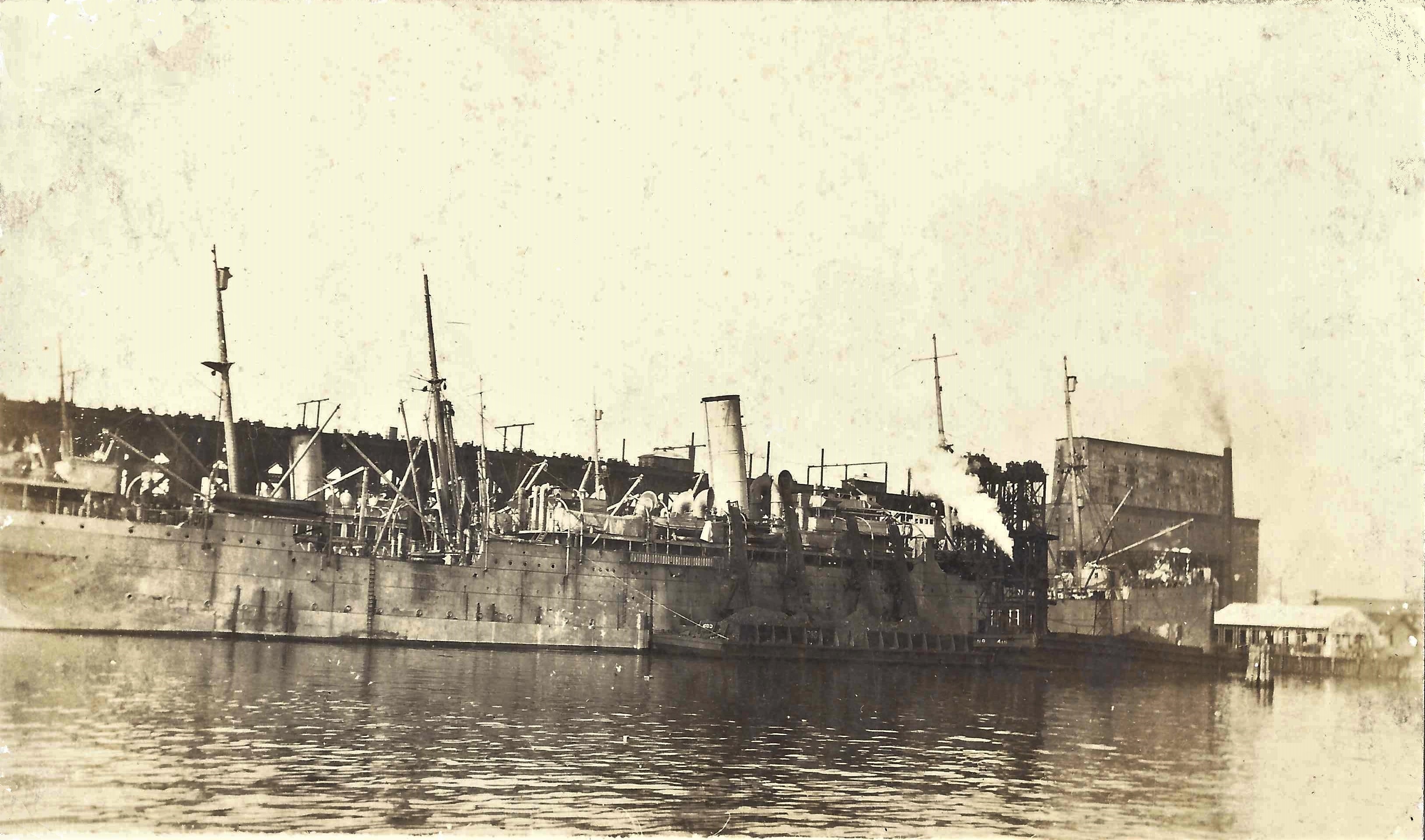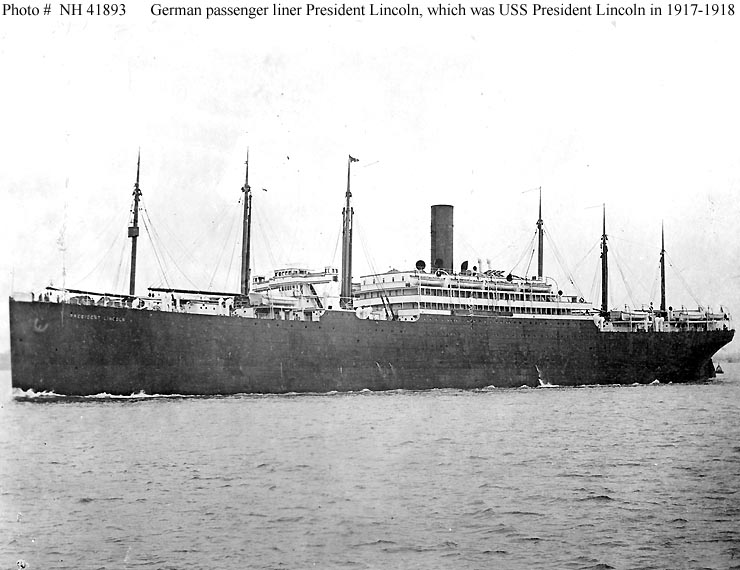|
Shipping Board
The United States Shipping Board (USSB) was established as an emergency agency by the 1916 Shipping Act (39 Stat. 729), on September 7, 1916. The United States Shipping Board's task was to increase the number of US ships supporting the World War I efforts. United States Shipping Board program ended on March 2, 1934. Initiation The United States' maritime position had been eroding for decades with some Congressional concern, some remedies actually worsening the situation, with European shipping companies dominating overseas trade and just over 10% of the value of trade carried in U.S. owned ships. The 1916 act was the result of Congressional efforts to create a board to address the problem dating from 1914. At this time the legislation was not a part of any war effort with specific intent as stated in the act: :"An Act to establish a United States Shipping Board for the purpose of encouraging, developing, and creating a naval auxiliary and naval reserve and a Merchant Marine to ... [...More Info...] [...Related Items...] OR: [Wikipedia] [Google] [Baidu] |
USS Astoria (AK-8)
The first USS ''Astoria'' (SP-2005/AK-8) was a steel-hulled, coal-burning steam cargo ship of the United States Navy. Service history In commercial service, 1902–1917 The ship was constructed in 1902 by J. Blumer & Co., Sunderland, England, as SS ''Burbo Bank'' for the Fenwick Shipping Co., Ltd., was acquired by Leonhardt & Blumberg of Hamburg, Germany shortly before the beginning of World War I, and was renamed SS ''Frieda Leonhardt''. After the outbreak of hostilities, she took refuge in Jacksonville, Florida, and remained there until the United States entered the war against Germany in the spring of 1917. Seized by the United States, 1917 She was then seized by United States Customs officials and was turned over to the United States Shipping Board (USSB). Transferred to the Navy by an executive order dated 22 May 1917, the freighter was moved to Charleston, South Carolina, to be prepared in the navy yard there for naval service. Renamed ''Astoria'' (SP-2005), she comp ... [...More Info...] [...Related Items...] OR: [Wikipedia] [Google] [Baidu] |
USS Covington (ID-1409)
USS ''Covington'' (ID-1409) was a German transatlantic ocean liner that was launched in 1908 for the Hamburg America Line (HAPAG) as ''Cincinnati''. In 1917 the United States seized her, had her converted into a troop ship and renamed her ''Covington''. In 1918 torpedoed her, killing six of her complement. Three tugs towed her about 1/3 the way to Brest, but she sank the afternoon of 2 July 1918. Building and peacetime career F Schichau built ''Cincinnati'' at Danzig, launching her on 24 July 1908. Two months later she was joined by a sister ship, , built by Blohm & Voss in Hamburg. ''Cincinnati'' was long and her beam was . Her tonnages were and . She had berths for 2,827 passengers: 246 first class, 332 second class, 448 third class and 1,801 steerage. ''Cincinnati'' had twin screws, each driven by a quadruple expansion steam engine. They gave her a speed of . ''Cincinnati'' began her maiden voyage from Hamburg via Cherbourg to New York on 27 May 1909. From 4 Ap ... [...More Info...] [...Related Items...] OR: [Wikipedia] [Google] [Baidu] |
SS Kronprinz Wilhelm
SS ''Kronprinz Wilhelm'' was a German ocean liner built for Norddeutscher Lloyd, a shipping company now part of Hapag-Lloyd, by the AG Vulcan shipyard in Stettin, Germany (now Szczecin, Poland), in 1901. She was named after Crown Prince Wilhelm, son of the German Emperor Wilhelm II, and was a sister ship of . She had a varied career, starting off as a world-record-holding passenger liner, then becoming an auxiliary warship from 1914–1915 for the Imperial German Navy, sailing as a commerce raider for a year, and then interned in the United States when she ran out of supplies. When the US entered World War I, she was seized and served as a United States Navy troop transport until she was decommissioned and turned over to the United States Shipping Board, where she remained in service until she was scrapped in 1923. German passenger liner (1901–1914) ''Kronprinz Wilhelm'' was launched on 30 March 1901. Her registered length was , her beam was and her depth was . Her tonna ... [...More Info...] [...Related Items...] OR: [Wikipedia] [Google] [Baidu] |
SS Rhein (1899)
} USS ''Susquehanna'' (ID-3016) was a transport for the United States Navy during World War I. She was the second U.S. Navy ship to be named for the Susquehanna River. Before the war she operated at SS ''Rhein'', an ocean liner for North German Lloyd. She was the lead ship of her class of three ocean liners. After the end of World War I, the ship operated briefly in passenger service as SS ''Susquehanna''. Laid up in 1922, ''Susquehanna'' was sold to Japanese ship breakers in 1928 and scrapped. History SS ''Rhein'' was launched on 20 September 1899 by Blohm & Voss of Hamburg, Germany, for North German Lloyd. The ship was long between perpendiculars ( overall) was abeam, and had a draft of . The ship's two quadruple-expansion steam engines turned her twin screw propellers that drove her at speeds of . ''Rhein'' sailed from Bremen to New York on 9 December 1899 for her maiden voyage, and began regular Bremen–Baltimore service in May 1900. Later that same year, ''Rhein'' ... [...More Info...] [...Related Items...] OR: [Wikipedia] [Google] [Baidu] |
USS Antigone (ID-3007)
USS ''Antigone'' (ID-3007) was a transport for the United States Navy during World War I, and the first ship of that name for the U.S. Navy. She was originally SS ''Neckar'' for North German Lloyd from her 1900 launch until seized by the U.S. in 1917. After her war service she was SS ''Potomac'' for United States Lines. SS ''Neckar'' ''Neckar'' was launched on 8 December 1900 at Geestemünde, Germany, by Joh. C. Tecklenborg and was owned and operated by North German Lloyd. ''Neckar'' was 500 feet long, had twin screw propulsion and quadruple expansion engines. During 1900–1914, she was the third largest transporter of steerage passengers (nearly all immigrants) to the United States, most of whom disembarked in New York and Baltimore. In the North Atlantic at the outbreak of World War I in the summer of 1914, the passenger and freight liner sought sanctuary at the neutral port, Baltimore, Maryland—lest she fall prey to the warships of the Royal Navy—and was interned, oste ... [...More Info...] [...Related Items...] OR: [Wikipedia] [Google] [Baidu] |
SS Kaiser Wilhelm II
The second SS ''Kaiser Wilhelm II'', named for the German Emperor, was a 19,361- gross register ton passenger ship built at Stettin, Germany (now Szczecin, Poland). The ship was completed in the spring of 1903. At the time of her launch she was larger by 1,900 tons than any other German ship and was surpassed in the weight of her hull and machinery only by the British liners ''RMS Cedric'' and ''RMS Celtic''. The ship was seized by the U.S. Government during World War I, and subsequently served as a transport ship under the name USS ''Agamemnon''. A famous photograph taken by Alfred Stieglitz called ''The Steerage'', as well as descriptions of the conditions of travel in the lowest class, have conflicted with her otherwise glitzy reputation as a high class, high speed trans-Atlantic liner. Design The ''Kaiser Wilhelm II'' was built with a full double-bottom along the hull. She was divided into 26 watertight compartments via 16 transverse bulkheads and one longitudinal bulkhead ... [...More Info...] [...Related Items...] OR: [Wikipedia] [Google] [Baidu] |
USS President Lincoln (1907)
USS ''President Lincoln'' was a troop transport in the United States Navy during World War I. Formerly the German steamer ''President Lincoln'' of the Hamburg-American Line, it was built by Harland and Wolff in Belfast in 1907. Seized in New York harbor in 1917, it was turned over to the Shipping Board and transferred to the Navy for operation as a troop transport. Having been damaged severely by her German crew, the ''President Lincoln'' underwent extensive repairs and conversion at Robin's Dry Dock and Repair Company in Brooklyn, New York before being re-commissioned as a Navy troop transport at Brooklyn on 25 July 1917. Commander Yates Stirling, Jr. was then placed in command. Service history The ''President Lincoln'' made five voyages from New York to France. Transporting approximately 23,000 American troops to Brest, France and St. Nazaire, four cycles were completed without incident: October–November 1917, December 1917-January 1918, February–March, and March–M ... [...More Info...] [...Related Items...] OR: [Wikipedia] [Google] [Baidu] |
USS Republic (AP-33)
USS ''Republic'' (AP-33) was a troop transport that served with the US Navy during World War II. In World War I she served with the Navy as USS ''President Grant'' (ID-3014) before being turned over to the Army and named ''Republic''. The ship was renamed the ''President Buchanan'' in 1921 before reverting to ''Republic'' in 1924. Originally christened as the SS ''Servian'', she was built in 1903 by Harland and Wolff, Ltd. of Belfast for the Wilson & Furness-Leyland Line, a subsidiary of International Mercantile Marine Co. spearheaded by J.P. Morgan. After plans for a North Atlantic service collapsed, she spent four years at anchor in the Musgrave Channel in Belfast. After being purchased by the Hamburg-American Packet Steamship Company (Hamburg-Amerikanische Packetfahrt-Aktien-Gesellschaft or HAPAG) in 1907, it was renamed the SS ''President Grant'', the third ship named for Ulysses S. Grant. In August 1914, after seven years of trans-Atlantic passenger service, she took ref ... [...More Info...] [...Related Items...] OR: [Wikipedia] [Google] [Baidu] |
SS Prinz Eitel Friedrich (1904)
SS ''Prinz Eitel Friedrich'' was a German passenger liner which saw service in the First World War as an auxiliary cruiser of the Imperial German Navy. Though largely overlooked, ''Prinz Eitel Friedrich'' was, after , the most successful of Germany’s first wave of auxiliary cruisers. She was able to remain at large for seven months, from August 1914 to March 1915, and sank 11 ships, for a total tonnage of . Early career ''Prinz Eitel Friedrich'' was built for the Norddeutscher Lloyd, a former shipping company of the Hapag-Lloyd, by the AG Vulcan shipyard in Stettin, in 1904. For the ten years prior to the First World War she served on NDL routes in the Far East. On the eve of war in August 1914 she was at Shanghai, with orders to proceed to the German naval base at Tsingtao for conversion as an auxiliary cruiser (''Hilfskreuzer''). Service history At Tsingtao ''Prinz Eitel Friedrich'' was equipped for her role as a commerce raider, receiving the armaments and crews of the ... [...More Info...] [...Related Items...] OR: [Wikipedia] [Google] [Baidu] |
USS Powhatan (ID-3013)
USS ''Powhatan'' (ID–3013) was a transport ship for the United States Navy during World War I. She was originally the SS ''Hamburg'', a built in 1899 by AG Vulcan Stettin, Aktiengesellschaft Vulkan of Stettin, Germany, for the Hamburg America Line. At the outset of World War I the ship was interned by the United States. She was soon chartered by the American Red Cross to take medical personnel and supplies to Europe. Renamed ''Red Cross'', she left New York in mid-September, 1914. When the U.S. entered World War I in April 1917, she was seized and converted to a troop transport. Originally commissioned as USS ''Hamburg'' (ID-3013), the ship was renamed ''Powhatan'' on 5 September 1917. During World War I, she carried 15,274 troops to France and after the war she returned 11,803 servicemen to the United States. After decommissioning by the U.S. Navy, the ship was turned over to the United States Shipping Board, and chartered for mercantile service until broken up in 1928. ... [...More Info...] [...Related Items...] OR: [Wikipedia] [Google] [Baidu] |
USS Pocahontas (ID-3044)
USS ''Pocahontas'' (SP-3044) was a transport ship for the United States Navy during World War I. She was originally SS ''Prinzess Irene'', a built in 1899 by AG Vulcan Stettin of Stettin, Germany, for the North German Lloyd line. At the beginning of World War I the ship was in New York and was interned by the United States. She was seized when that country entered the conflict in 1917 and converted to a troop transport. As USS ''Pocahontas'', she carried 24,573 servicemen to Europe, and after the war returned 23,296 servicemen to the United States. Decommissioned by the U.S. Navy, the United States Shipping Board sold her back to the North German Lloyd line, where she saw mercantile service until being scrapped in 1932. SS ''Prinzess Irene'' She was launched as ''Prinzess Irene'' on 19 June 1900 by Aktiengesellschaft Vulkan, Stettin, Germany for North German Lloyd Lines. On 9 September 1900, she started her maiden voyage to New York City. On 30 October 1900, she began the ... [...More Info...] [...Related Items...] OR: [Wikipedia] [Google] [Baidu] |








